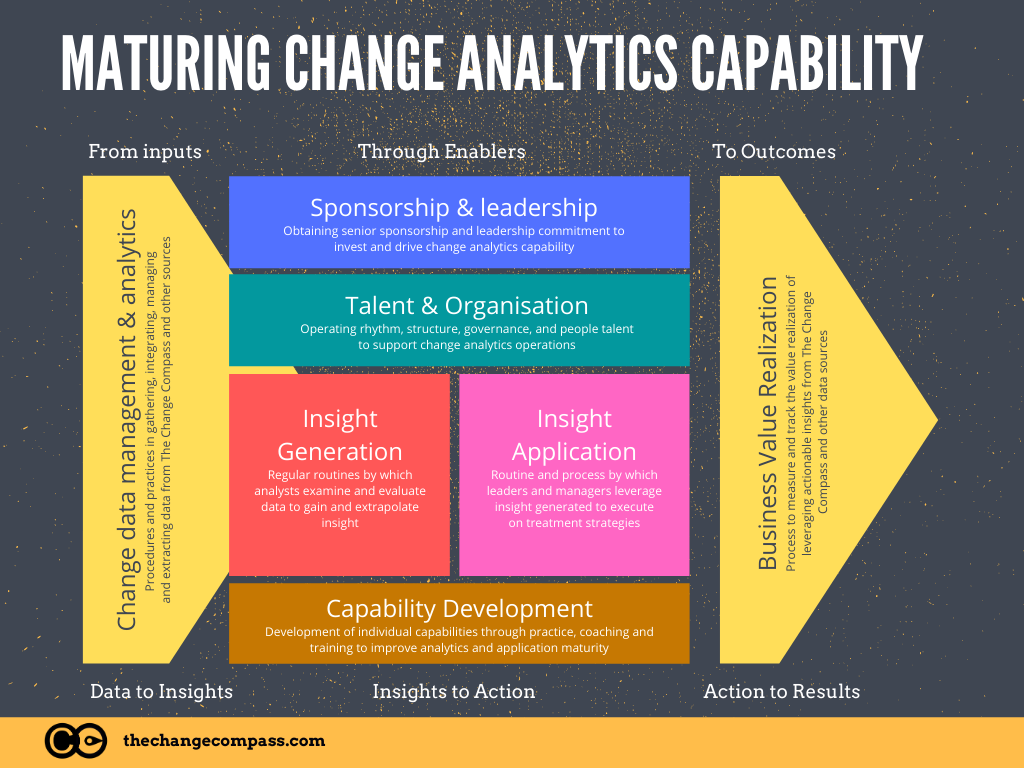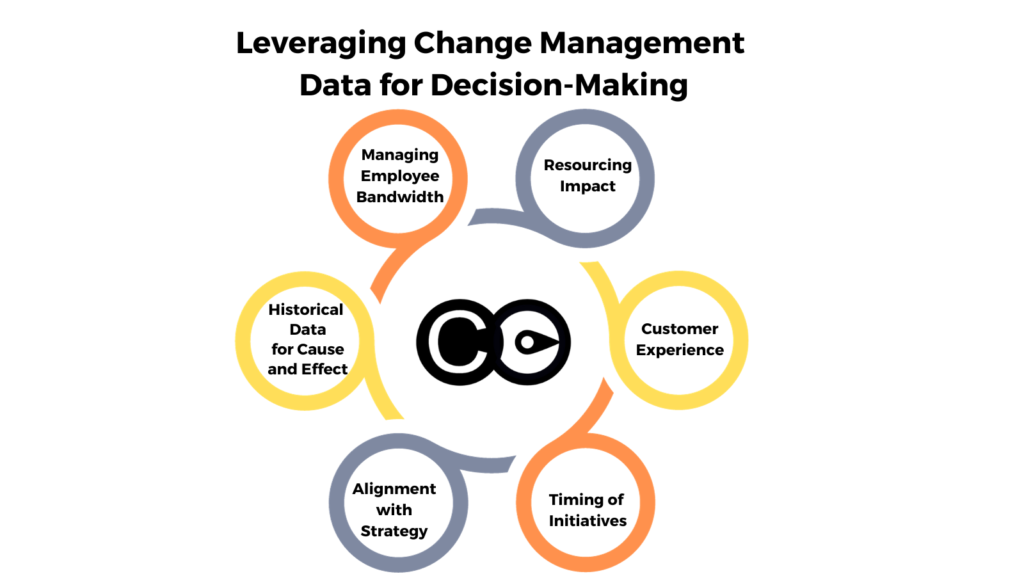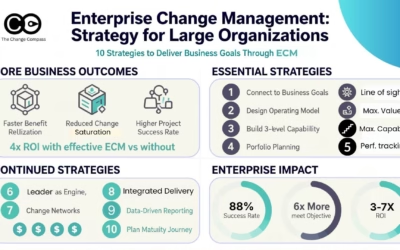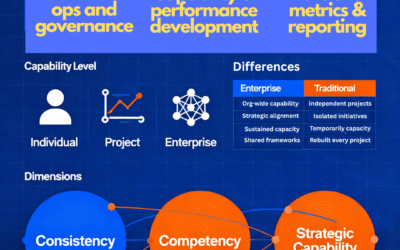When I was a kid, I used to love my Walkman. I’d create mixed tapes of my favorite songs and share them with friends, spending hours discussing our favorite tracks. The rewind button on my Walkman got a lot of use, and I couldn’t imagine anything ever replacing it. But, of course, it did. Several times over. First, Walkman models with higher fidelity came out, followed by slimmer versions, and then tapes gave way to mini-disc players. Eventually, CD players emerged as the new standard. After a few generations of iPods, we now have phones and watches that have made the Walkman nearly obsolete.
Change is inevitable and, in today’s world, business leaders must recognize that it’s happening at an unprecedented pace. Technological advancements, innovation, and globalization are driving this accelerated rate of change. Companies, no matter the industry, must continually adapt to remain competitive. For instance, Apple, once a small player in the mobile phone industry, has now become the world’s largest smartphone manufacturer, displacing giants like Motorola, Nokia, and RIM. Utilities are grappling with changes due to grid modernization, fluctuating commodity prices, and the shift toward renewable energy sources. Financial services companies, including those involved in financial accounting, are dealing with a myriad of challenges, from regulatory changes to the cost of maintaining IT infrastructure and growing competition in the digital banking sphere.
This wave of change isn’t confined to a few industries but extends to telecommunications, certain government departments, and healthcare, among others. Companies across the board are facing an array of transformative initiatives.

In today’s dynamic business environment, change managers must focus on managing multiple successful change management initiatives, particularly at an enterprise-wide scale, as it is a complex challenge. Organizations must ensure that these changes engage the entire team, are well-coordinated, align with overall business goals, and positively impact employee performance and customer experience.
Change initiatives are essentially projects that require employees—and in some cases, customers—to adapt to new processes, tools, or behaviors through a systematic approach as part of the strategic plan for successful change initiatives. Whether it involves adopting a new system interface, understanding a new product, or adhering to a revised company policy, these initiatives necessitate behavioral changes. However, the challenge lies in the fact that these initiatives often cut across multiple departments within an organization.
For instance, a new IT system rollout impacts not only the IT department but also influences how other departments operate. Similarly, a new HR policy affects the entire organization, while changes to a product’s features can impact marketing, sales, and customer support teams. The ripple effect of these changes means that rarely does an initiative impact just one department—it often affects many areas of the organization, sometimes leading to conflicting priorities and confusion.

However, here’s the challenge: these change initiatives often affect multiple departments within an organization. For example, a new IT system rollout impacts the IT department but also influences how other departments work. A new HR policy influences the entire organization, while changes in a product’s features affect the marketing, sales, and customer support teams.
The consequence is that change initiatives rarely affect just one department; they have a ripple effect across the organization. In some cases, an initiative might even contradict another department’s efforts, leading to confusion and inefficiency.
To manage these changes effectively, organizations must gain a holistic view of all ongoing initiatives, including the company culture and corporate culture as well as organizational culture. This means understanding what changes are happening, when they’re happening, and how they’ll impact different employee and customer groups, which will ultimately improve the chances of success.
A Unified View of Change
The challenge for large organizations is to create an integrated view of all change initiatives, particularly during the implementation process, to sustain outcomes for the long term. For smaller companies or industries with relatively stable environments, spreadsheets might suffice. But for larger, more complex organizations, including senior executives, with operations spanning different regions and functions, a more rigorous approach is necessary, as constant transformation has become a top priority.
Sadly, many large organizations still rely on standalone spreadsheets that require extensive manual effort for data collection, verification, analysis, and reporting. These spreadsheets often focus on cost, timeline, and resource data but tend to overlook a crucial piece of the puzzle: change impact data, which reveals how employees and customers are affected by an initiative.
Imagine the sheer volume of changes a sizable financial services company may face in a year. There could be over 10 legislative changes, countless business improvement initiatives, multiple restructuring efforts, numerous technology updates, and various divisional policy changes. And this is just the beginning. The overall list of change initiatives can be overwhelming.
When I talked to colleagues in divisional operations, they often expressed their difficulties in keeping track of changes. They struggled to understand what changes were happening, which department was driving them, which teams were affected, the timing of these changes, the nature of the impact, and the size of the impact.
With each department maintaining separate spreadsheets or, worse, not having any centralized system, the result was continuous disruptions to employee performance and operational efficiency. Imagine a scenario where one department pushes its call center to sell a product, while another department sends out notices stating that the same product is nearing end-of-life. The resulting confusion affects not only employee performance but also the customer experience.
For organizations dealing with a multitude of changes, how can they create an integrated view of all change initiatives, regardless of whether they involve legislative, technological, policy, strategic, or product changes?
Utilizing Technology for Change Management
To effectively manage the complexity of numerous change initiatives, organizations can benefit from an online tool. The tool should help reduce complexity, enhance communication, and improve risk management. Here are the key characteristics such a tool should have:
Ease of Administration: The tool should be simple for both those driving change and key stakeholders receiving it. It should efficiently capture essential data related to people’s change impacts, including key performance indicators relevant to the project’s success.
Focused on Impact Data: While the tool should cover essential project and business data, its primary focus should be on collecting key impact data. This data complements existing data, enhancing the overall change management strategy.
Effective Reporting Tools: The tool should offer effective and flexible reporting tools. These help operational managers, project management offices (PMOs), and senior managers plan for people’s readiness for change initiatives.
Analysis Capabilities: The tool should include analysis features to identify change risks. These analyses could include change loading and timing issues, which might necessitate reprioritization of initiatives.
Customization: Each organization is unique in terms of its departments, types of changes, and reporting requirements. The tool should be adaptable to accommodate these differences.
However, the effectiveness of any tool depends on how well people use it. An effective tool for presenting a sequence of changes the company is undertaking should be complemented by two crucial aspects:
1. Establishing Processes and Governance to Embed the Tool
Successfully embedding a portfolio management tool across an organization requires establishing a clear operating rhythm and consistent processes for its use. Each division should have defined roles and responsibilities to ensure that the tool is effectively utilized and that data is accurately entered and maintained.
For instance, in the digital marketing department, specific roles should be designated to coordinate product changes, ensuring that every relevant update is promptly entered into the tool. These roles might also include responsibilities for analyzing the data provided by the tool to optimize product launch strategies, aligning them with other ongoing initiatives, and avoiding conflicts.
As organizations adopt an integrated view of change initiatives, it becomes increasingly important to establish an enterprise-level governance body or committee. This governance body should oversee the ongoing development, deployment, and usage of the tool, ensuring it continues to meet the evolving needs of the organization.
The committee should be composed of representatives from various departments, including IT, marketing, HR, and operations, to address the diverse needs of stakeholders across the organization. This body would regularly review the strategic implications of the tool’s data, discuss risks associated with change delivery, and prioritize initiatives based on their potential impact.
By maintaining this operating rhythm, organizations can ensure that the tool becomes an integral part of their change management processes and the company’s culture, driving better coordination, reducing risks, and enhancing decision-making at both the strategic and operational levels.

To read more about building and maturing change analytics capability click here.
2. Leveraging the Tool for Business Decisions
Once an organization has established an integrated view of its change initiatives through a robust portfolio management tool, the focus shifts to leveraging this data to inform critical business decisions. The data generated by the tool can be instrumental in guiding decisions related to various aspects of change management, such as enhancing the organization’s competitive advantage.
- Employee Capacity Management: The tool provides visibility into the number and scale of ongoing initiatives, enabling leaders to assess whether employees have the capacity to absorb additional changes without experiencing burnout or a decline in productivity. By understanding the cumulative impact of these initiatives, the organization can plan and stagger changes to ensure sustainable workload levels.
- Resource Allocation: With a comprehensive view of all change initiatives, organizations can make more informed decisions about how to allocate resources effectively in their organizational leadership. The tool allows leaders to prioritize initiatives that align with strategic goals and allocate resources to those with the greatest potential impact.
- Customer Experience Management: The data can also help anticipate the potential effects of various initiatives on customer experience. By identifying and mitigating risks early, organizations can ensure that changes do not negatively impact customer satisfaction or loyalty.
- Timing and Sequencing of Initiatives: The tool enables organizations to analyze the timing and sequencing of change initiatives to minimize disruptions and conflicts. This strategic approach ensures that initiatives are rolled out in a manner that optimizes their impact while minimizing operational risks.
- Strategic Alignment: By providing real-time insights into how ongoing initiatives align with the overall business strategy, the tool supports decision-making that engages team members and ensures every change initiative contributes to the organization’s long-term objectives.
Moreover, the tool’s ability to capture and analyze historical data is invaluable. By examining past initiatives, organizations can gain insights into optimal change capacity and identify patterns or trends that inform future decision-making. This historical perspective enables organizations to predict and plan for change more effectively.
Implementing an enterprise-level change management tool not only provides a comprehensive view of all change initiatives but also significantly enhances the organization’s overall change management capability. As processes and internal processes are refined to support the tool, the organization becomes more agile, resilient, and capable of managing change effectively, ultimately driving better business outcomes.

To read more about measuring change using change management software click here.
In this article, we’ve emphasized the importance of understanding what is changing and having an integrated view of initiatives. To experience the transformative power of The Change Compass, join our Weekly Demo every Tuesday to enhance your business performance.






